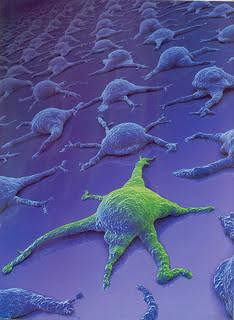Will stem cell success mean hearing aids become redundant?
 A team of scientists from Sheffield University have partially restored the hearing of deaf gerbils with injections created from human embryonic stem cells. Is this the end for hearing aids?
A team of scientists from Sheffield University have partially restored the hearing of deaf gerbils with injections created from human embryonic stem cells. Is this the end for hearing aids?
Not just yet.
The Sheffield team, lead by Dr Marcelo Rivolta, saw the gerbil’s hearing improving by an average of 46% – with the improvement taking place over four weeks from the injections. Rivolta said, “We developed a method to drive human embryonic stem cells to produce both hair cells and neurons, or nerve cells, but we only transplanted the neurons. We then used a technique called auditory brainstem evoked responses (ABR), which measures if the brain can perceive an electrical signal after sound stimulation. The responses of the treated animals were substantially better than those untreated, although the range of improvement was broad. Some subjects did very well, while in others recovery was poor”.
The type of hearing loss that was treated in the gerbils was very similar to auditory neuropathy, which means roughly 15% of those with hearing loss could benefit this work. Auditory neuropathy is a type of deafness where the problem lies, not primarily with the hair cells, but in the connection of the hair cells with the brain. Patients can be born with it and there are cases due to a genetic defect where a few responsible genes have already been identified.
Which means, as I understand it, if you have noise-induced hearing loss, age-related hearing loss or sensorineural hearing loss then this treatment would not work for you.
Dr Rivolta is hopeful that if tests on gerbils continue to produce good results and are shown to be safe then human trials could start in as little as two years.

